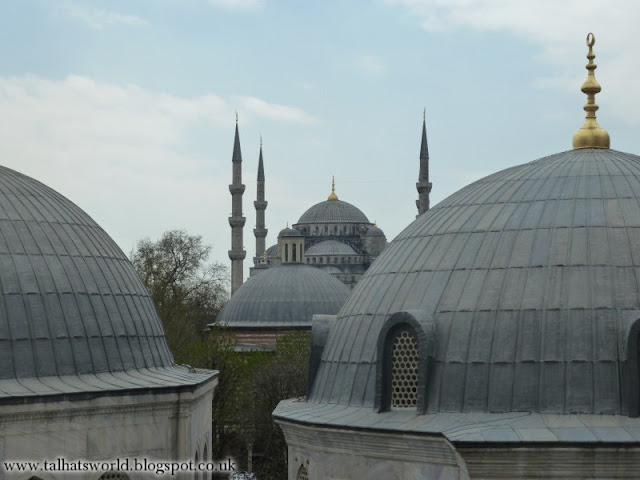- Wednesday 11th April 2012
As a veteran traveler, I find it much harder to be impressed by sights and attractions than I used to be. It has to be something truly outstanding to capture my attention. I am glad to report that the Hagia Sophia easily falls into that category.
Honestly speaking it may slightly lack, and only slightly may i repeat the external beauty that its opposite blue Mosque poses. What it lacks from outside it makes up in abundance with its glamorous history and stunning interior beauty. I was in awe of its mesmerizing beauty as soon as i walked into the massive hall.
The Hagia Sophia started life as a church, and it was the largest one in the world for almost a thousand years, until 1520. After the city had been conquered by Sultan Mehmood II, the Sultan ordered the building converted to a mosque. Most of the mosaics were plastered over, and Islamic features like mihrab, mimbar and four minarets were added. It remained a mosque until 1935, when it was converted again—this time to a museum.
Honestly speaking it may slightly lack, and only slightly may i repeat the external beauty that its opposite blue Mosque poses. What it lacks from outside it makes up in abundance with its glamorous history and stunning interior beauty. I was in awe of its mesmerizing beauty as soon as i walked into the massive hall.
The Hagia Sophia started life as a church, and it was the largest one in the world for almost a thousand years, until 1520. After the city had been conquered by Sultan Mehmood II, the Sultan ordered the building converted to a mosque. Most of the mosaics were plastered over, and Islamic features like mihrab, mimbar and four minarets were added. It remained a mosque until 1935, when it was converted again—this time to a museum.
Hagia Sophia
The crowds outside Hagia Sophia.
Name placard at entrance.
Entrance ticket.
Doors leading inside to the foyer.
First view of the stunning hall.
The Allah and Muhammad signs.
Restricted area in front of the Mirhab
A portrait of Mother Mary holding the baby Jesus is imprinted in the domed ceiling above the stained glass windows.
Islamic verses in Arabic.
Passage and stairs to go to the upper level.
Cobbled path going to the upper level.
Upper level gallery. Love the ceiling architecture.
From the upper level looking down.
No flash photography allowed on The Deësis mosaic, showing Christ as ruler.
The above photo of The Deësis mosaic with Christ as ruler shows how it originally would have looked.
Marker of the tomb of Henricus Dandolo,
Mother Mary holding child Jesus.
Looking back at the entrance from upper level,
Gallery of photos from Hagia Sophia.
Dome from inside.
Looking through the domes of Hagia Sophia at the Blue Mosque.
This (the big central circle) is the Omphalion, the site on which Byzantine kings and emperors had been crowned.
Information about Hagia Sophia hangs from boards in the entrance foyer.
From the outside.
Photo of myself in front of the large Islamic signs.
Photo of myself in front of Hagia Sophia.









































No comments:
Post a Comment